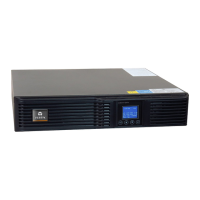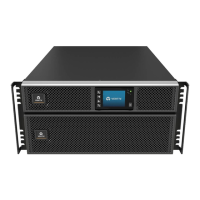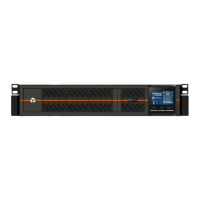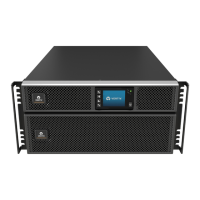8 TROUBLESHOOTING
This section indicates various UPS symptoms you may encounter and provides a troubleshooting guide in
the event the UPS develops a problem. Use the following information to determine whether external
factors caused the problem and how to remedy the situation.
8.1 Symptoms that Require Troubleshooting
The following symptoms indicate the UPS is malfunctioning:
• The relative indicators illuminate, indicating the UPS has detected a problem.
• An alarm buzzer sounds, alerting the user that the UPS requires attention.
8.1.1 Faults
When the fault indicator is illuminated, the LCD displays the fault. The faults are described in Table 8.1
below.
DISPLAYED FAULT CAUSE CORRECTIVE STEPS
UPS self test failed The battery is bad or weak. Contact technical support.
UPS shutdown command
received
The UPS shuts down through communication. Contact customer service.
UPS overload The UPS is overloaded.
Reduce the load and contact technical
support.
Inverter Out of Order The inverter is faulty. Contact technical support.
Battery Weak/Bad The battery is bad or weak. Replace the battery.
Output Short Circuit The output connection is short-circuited.
Shut down the equipment and contact
technical support.
DC Bus Overvoltage The DC bus is faulty. Contact technical support.
UPS Overtemperature
Over-temperature occurs to the UPS and the UPS will
transfer to Bypass mode.
Reduce the load and contact technical
support.
Charger Out of Order The charger is faulty. Contact technical support.
Fan Out of Order At least one fan is faulty. Contact technical support.
DC Bus Discharge Fail A DC-DC failure occurs. Contact technical support.
Table 8.1 Description of displayed faults
NOTE: If the UPS encounters a fault and no correction attempt is performed within 2 minutes, the LCD
back light will flash (on 1 second and off 1 second) as an alert.
Press any button to exit the alert mode. If no correction attempt is performed on the UPS, the LCD
back light will flash again until the UPS fault is corrected.
8 Troubleshooting
49

